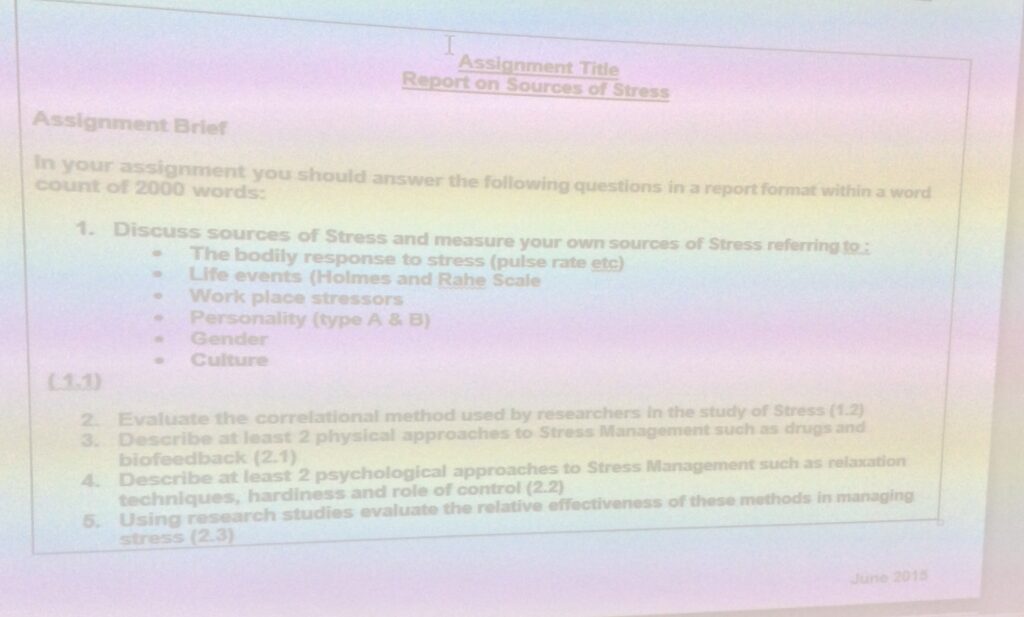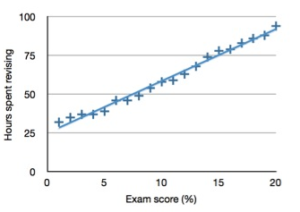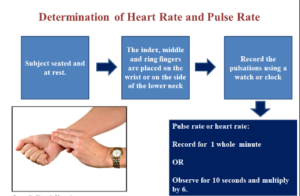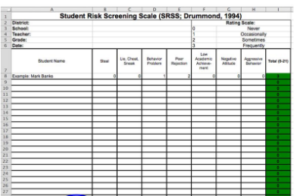QUESTION

ANSWER
SOURCES OF STRESS
Executive summary
This report sheds light on the sources of stress being a greatest factor in today’s generation. Stress can be caused due to many factors including one’s personality level, work stressor levels, gender level where female being the most sufferer of stress issues. It was also studied that researchers have identified some co relational methods to study stress based on two variables. One including dependent and other including independent variable which is the best possible way of understanding human’s stress. However, based on these, different physical and physiological approaches are also undertaken though providing a beneficial way to reduce stress levels. Relaxation techniques, biofeedback and other stress inoculation training programs have found to be the relative effective method to lower one individual stress.
Table Contents
Introduction
1. Discussing Sources of stress
2. Measuring own sources of stress
3. Correlation method to study stress
4. Approaches to stress management
5. Physical approach to stress management
6. Physiological approaches to stress management
7. Research studies to evaluate relative effectiveness of stress management
Conclusion
References list
Appendices
Appendix 1
Appendix 2
Introduction
In this report, discussion regarding sources of stress with relation to personality, gender and work life stressors has been presented. Correlation method will also be evaluated here to understand the study of stress. A description has to be analyzed here both on physically and physiologically approaches to stress management.
1. Discussing Sources of stress
The characteristics of owing stress with physical, emotional or personal behavioural signs and symptoms of stress can be of different varieties. One of the main crucial signs that can be described under this is the physical, emotional and behavioural signs. Huang et al. (2016, p.23) stated that the vital physical signs include symptoms such as stress headaches, decreased immunity, increase palpitations, and sleep apnoea, high blood pressure, and increased heart beat, heart related problems leading to stroke and attack. Though in some cases physical signs are itself a manifestation of emotional trauma, some emotional conditions does not manifest physically. These include severe anxiety, depression, feeling of insecurity, lack of focus, burnout, increased irritability, anger, inability to relax and a feeling to unusual tension. The behavioural manifestations of stress include avoidance of tasks, difficulty in completing work fidgeting, tremors, weak interpersonal communication, adaptation to smoking and drinking behaviours, over eating or under eating, abusive nature, social isolation, crying spells, to name a few (Corliss, 2016).
There are many a ways by which body responses occur to stress. According to the views of Buckner et al. (2017, p.1020), general adaptation syndrome (GAS) is the most possible way that the body responds to stress. The stress issue can be divided into three stages under this syndrome. The first stage is the Alarm reaction stage. This stage refers to the initial symptoms that are experienced by the body under stress and flight responses occur. In this stage, the physiological responses in the body to the stress are highlighted. At this stage, cortical brain releases different hormones along with adrenal gland as a result of which, energy is increased (Burges, 2017). The next stage of the same is Resistance stage. Body releases a decreased amount of cortisol and normalises blood pressure and heart rate. This is a stage of repairing of the body after the flight responses. The third and final stage is the Exhaustion stage. This stage is the consequence of chronic stress. An individual, who is struggling with stress for a prolonged period is capable for draining emotional, physical and mental stress for which the individual can get exhausted.
Stress can also be divided according to different pathways. These are acute stress and chronic stress. Kobayashi et al. (2016, p.12) mentioned that acute stress results from a particular event or situation in acute stress type, consequences can be good relaxation of mind due to release of stress hormones. Acute stress can however attack the cardiovascular system of a body with increased heart rate. In cases of chronic stress, stress results from repeated exposure to different situations, which leads to release of stress hormones. These stress hormones in turn affect the circulatory system of one’s body which are the main causes of occurrences of heart attack and stroke. Bodily effects of stress can also be manifested through the effects on Autonomic Nervous System. The parasympathetic branch of autonomic nervous system is responsible for body’s digestion and rest when the body is at relaxation and rest. Servia et al. (2018, p.69), opined that this system normally works under a stressful situation. The sources of stress can respond from sympathetic nervous system. Immediate impact of stress is caused due to activation of sympathetic nervous system along with depression of parasympathetic nervous system. Psychological reactions are caused by sympathetic nervous system.
Further, the body’s Fight or flight system also works during an acute physiological stress, the sympathetic nervous system is activated because of the accidental release of some hormones. This response is actually known as fight or flight response due to the reason that the body prepares itself to either flee or flight from the threat.
2. Measuring own sources of stress
Life events: I have identified that I can identify my major stressful life events with the help of Holmes and Rahe Social Readjustment Rating Scale (SRRS). This scale will be beneficial for me as the scale will contain 117 items in concern with stressful activities. It will include concerns about losing things or persons, arguments, physical appearance, disappointments and weight. Both positive and negative events are responsible to relieve and increase stress. Whether marriage, inclusion of pets, birth of a baby (positive events) or death of spouse, or a close family member, even if a pet can be counted as a negative incident. Thus every life incident good or bad has a major impact on the stress levels of a person. (Refer to appendix 1)
Major life events also include workplace stressors. By working for long hours in the office, bodily and mental stress increases a lot. Extended hours of uninterrupted work can initiate muscle tension. Influenced from the views of Servia et al. (2018, p.69), I have felt that this muscle tension is actually a reflex reaction in response to stress. However, I have felt that I can measure my stress level with the help of Pulse rate and SRSS scale. A normal heart beat rate in one minute is 60-100 and with the help of this I will understand my pulse rate. However, SRSS scale will help me to measure the amount of stress in a whole year. (Refer to Appendix 2)
Personality: According to Friedman and Rosenman (1974), apart from Personality A and Personality B, there are also other three types of personalities such as Personality C, personality D and Personality E. The two types of personality as proposed by Friedman and Rosenman contradicts each other’s own characteristics. While type A is characterized as competitive along with a hostile and aggressive nature. Type B, however is a more easy going personality, with never in a rush kind of attitude. He/she believes to live in the moment and is always relaxed. While Type A always try to achieve more and is far more ambitious than Type -B, on the other hand is very patient and believes that time takes its own course to do everything. As said earlier, both of them contradict each other’s personality. Coming to the case of type C, D and E, Type C gives attention to details, kind of introvert due to lack of self -assertiveness, is very trusting and has good analytical skills. Type D is the one with major negativity, irritability, remains worrisome all the time and is somewhat socially withdrawn. Due to all of these kinds of characteristics, Type D is a more disease prone personality in general. The last type of personality is the Type E. The people belonging to Type E are neither like A nor like B. But they have a general sense of self worthiness and know how to survive. This kind of personality is more relatable to women. As far as I am concerned, I think I belong to type C. I have many characteristics that are similar to type-C.
Gender: As per the views of Espnes et al. (2016, p.690), women’s report much higher levels of stress than men. However, in regards with these I have felt that being women is more stressful as I have always placed more emphasis on the need to think about stress instead of managing it. It has however proved a health issue for me as hormone cortical has been released from my body. Women, in general, are always found to be more stressed than men. The reason behind it can definitely be attributed to the multi-tasking role women generally perform. Women are also subjected to many kinds of roles such as traditional roles of a mother and homemaker. Apart from that, women also handle chores at workplace which are more authoritative and thus, sometimes, take a toll on their health. Due to more hormonal fluctuations in a woman’s body, more cortisol or the stress hormone is released under such situations, adding to the enhancement of the stress level in women.
Culture: I have influenced from a report that culture stress nowadays are the modern stress factors that are superimposed on the regular stresses of our everyday’s life (Murad, 2018). Communicating with people of different culture in an everyday job can be a tedious task. It can also increase mental tension, in cases, if the environment of my workplace is not supportive and not respectful towards my culture. However, I feel that measuring this source of cultural stress can be reduced by exercising regularly and enjoying the simple rhythms of life.
Ways to cope up with different stressors
Working in a hospital with different patients suffering from different diseases can be a hectic and exhausting job, both physically and mentally. Since, a nurse is the first person of contact for the patients in absence of a doctor. Managing everything single -handed is not possible. Therefore, I prefer to communicate efficiently with all my colleagues and my superior doctors, as well as my patients. Communication is the most effective way to solve any kind of problem. Apart from that, I also like to take breaks from my duty at regular intervals to relieve stress and feel relaxed.
3. Correlation method to study stress
Correlation research is a category of non experimental research where the researcher analyzes two variables and find out the statistical relationships among them with no or less effort (psychteacher.co.uk 2019). Based on the views of Mucci et al. (2016, p.983), these variables will include score on two external personality tests or the hours spent on revision and the amount of marks the students get. However, there are two types of correlation-positive and negative. Positive correlations are those where both the variables increases together. In contrast, a negative correlation is attained when one variable decreases whereas the other one increases.
Advantage of correlation study is that it allows gathering more data compared to that of experiments. On the other hand, its weakness is that is uncovers a relationship only and is unable to provide a conclusive statement or reason of relationship between two variables.

Figure 1: A scatter gram showing a positive correlation between hours spent revising for an exam and exam grade attained
(Source: psychteacher.co.uk, 2019)
4. Approaches to stress management
Physical approach: This consists of exercises and involvements of bodily movements that are potential of reducing stress. For example, deep breathing, progressive muscular exercise and relaxation, and centring methods can allow an individual to enhance concentration and remain stable.
Psychological approach: Based on the views of Pelka et al. (2017, p.216) this can be done by prioritising own needs, undertake the feeling of positivity, taking help from psychiatrist and meditation. These cumulatively enhance the cognitive state of individual and reduce stress. Biofeedback and neuro-feedback training approaches are potential ways of managing stress by psychological approach.
5. Physical approach to stress management
Drug resistance
Researchers have analyzed that drug treatments are profoundly effective in mitigating the stresses of an individual. Antianxiety drugs like Librium and Valium are useful for stress management and Beta Blockers aims to reduce activity of adrenaline in our body. These drugs usually slow down the activity of central nervous system and enhances the action of a neurotransmitter. According to Huang et al. (2016), evidence came based on the views of who treated 250 patients with anti-anxiety drugs and the control group was given a placebo. The result was found that the anti-anxiety drugs were more useful.
Biofeedback
Biofeedback is a way of managing stress from physical approach. This technique can work with the help of certain processes (psychteacher.co.uk, 2019). Being an EN, I face a lot of pressure at workplace that subsequently gives rise to stress. In order to reduce and manage my stress, I have undertaken the psychological approach, where I underwent treatment from biofeedback therapist. My therapist made me follow series of physical and mental exercises that were designed to help me learn the ways of gaining control over the bodily processes that are being monitored. I was able to monitor each momentarily change of body processes by visual and audio means. I was able to comprehend the relationship between the ways of changes as well as the impact. Along with the help of biofeedback, I was able to learn the ways by which alteration to body processes can be done consciously and quickly (Jaumard-Hakoun, 2017, p.134).
6. Physiological approaches to stress management
Relaxation techniques
Relaxation techniques are the most responsive techniques to reduce stress. It was reported that, breathing slowly and steadily can disengage one’s mind from bad thoughts and distractions (Corliss, 2016). However, the technique of body scan can be a progressive way of muscle relaxation thus releasing any physical tension. While relaxing it is also beneficial to create a guided imagery of scenery or a place just in order to help one’s mind to relax and focus. Mindful meditation is useful in terms of removing anxiety, pain and depression in people. However, repetitive prayer also proves beneficial to reduce stress. As per the views of Pelka et al. (2017, p.220), these relaxation techniques if performed for 30 minutes every day can be a better way to cure stress levels.
Hardiness
It was reported that Hardy Attitudes of commitment, control and challenge can be helpful to decrease one’s stress (Khoshaba, 2011). This methods can however be approached by building a strong commitment where person should live in a meaningful life and be self-controlled on that with more powerfulness. Thus being harder in case of challenging, personal improvement and fulfilment can be achieved providing a better way of reducing stress. However, these hardy attitudes are too much essential to motivate the stressors and creating a wider scope of new opportunities for building the best live possible.
7. Research studies to evaluate relative effectiveness of stress management
While managing stress, it is essential to understand the relative effectiveness of stress management. Relaxation and hardiness techniques are very effective as research studies have been analysed and it was found that many people’s get cured by these techniques. Thus these techniques are a way of making one comfortable and help the mind to be free. However, in case of drug therapy and biofeedback techniques, it is the cheapest way of reducing stress. Though being cheap, people find it better to quickly access through stress management. Ratanasiripong et al. (2015) studied a sample of 60 graduate students within the public health nursing assigned to control group either or biofeedback intervention. As per the results, biofeedback intervention showed effectiveness in reducing levels of stress, depression and anxiety over 4-week period. On the other hand, control group had increased symptoms of anxiety as well as depression.
Except these methods, there are also other effective ways of managing stress. Based on the views of Meichenbaum (2017, p.983), stress inoculation trainings or therapy can be the effective way to help patients to prepare themselves in advance of managing stress hurdles successfully. In this type of therapy or training programs, patients are educated with certain stressful situations, thus giving a wider scope of structuring the outcomes of stress levels. An important therapeutic way of handling stress is the cognitive-behavioural therapy. In this behaviour, people are taught to remove negative patterns and emotions from their body so as gain more positive aspect of the work or emotion they are handling. It also advised to avoid multitasking and gaining a proper focus in the subject before handling it.
Conclusion
Stress is a situation of physical and emotional tension. Based on the above-mentioned sections, it can be concluded that stress can come from any feeling relating to feel frustrated, nervous and angry. This can affect one’s mind and body in various ways. While managing stress from the above mentioned sections, it was been discovered that it have different impact on gender, personality, work stressors and life events.
References list
Bowers, M.E. and Yehuda, R., (2016). Intergenerational transmission of stress in humans. Neuropsychopharmacology, 41(1), p.232.
Buckner, S.L., Mouser, J.G., Dankel, S.J., Jessee, M.B., Mattocks, K.T. and Loenneke, J.P., (2017). The general adaptation syndrome: potential misapplications to resistance exercise. Journal of science and medicine in sport, 20(11), pp.1015-1017.
Burges., L. (2017). What to know about general adaptation syndrome Medical News Today [online] Available on https://www.medicalnewstoday.com/articles/320172.php [Accessed 27/01/19]
Corliss., J. (2016). Six relaxation techniques to reduce stress Harvard health publishing [online] Retrieved on 28th January, 2019. Available on: https://www.health.harvard.edu/mind-and-mood/six-relaxation-techniques-to-reduce-stress [Accessed 28/01/19]
Espnes, G.A., Nguyen, C. and Byrne, D., (2016). Gender Differences in Psychological Risk Factors for Development of Heart Disease. Handbook of Psychocardiology, pp.685-700.
Github.io (2019). Sources of Stress Available on: https://saylordotorg.github.io/text_human-relations/s07-03-sources-of-stress.html [Accessed 26/01/19]
Huang, Z., Zhou, L., Chen, Z., Nice, E.C. and Huang, C., (2016). Stress management by autophagy: Implications for chemoresistance. International journal of cancer, 139(1), pp.23-32.
Jaumard-Hakoun, A., Chikhi, S., Medani, T., Nair, A., Dreyfus, G. and Vialatte, F.B., (2017), July. A Biofeedback Approach to Investigate Neurocognitive Mechanisms of Feedback-based Learning. In The First Biannual Neuroadaptive Technology Conference (p. 134).
Khoshaba., D. (2011). The Courage to Grow from Stress Psychology Today [online] Available on: https://www.psychologytoday.com/us/blog/get-hardy/201112/the-courage-grow-stress [Accessed 26/01/19]
Kobayashi, I., Lavela, J., Bell, K. and Mellman, T.A., (2016). The impact of posttraumatic stress disorder versus resilience on nocturnal autonomic nervous system activity as functions of sleep stage and time of sleep. Physiology & behavior, 164, pp.11-18.
Meichenbaum, D., (2017). Stress Inoculation Training: A preventative and treatment approach. In The Evolution of Cognitive Behavior Therapy (pp. 117-140). Abingdon: Routledge.
Mucci, N., Giorgi, G., Roncaioli, M., Perez, J.F. and Arcangeli, G., (2016). The correlation between stress and economic crisis: a systematic review. Neuropsychiatric disease and treatment, 12, p.983.
Murad., H. (2018). Cultural Stress: A Modern Threat to Health Corporate Wellness Magazine.com [online] Available on: https://www.corporatewellnessmagazine.com/article/cultural-stress-a-modern-threat-to-health [Accessed 27/01/19]
Pelka, M., Kölling, S., Ferrauti, A., Meyer, T., Pfeiffer, M. and Kellmann, M., (2017). Acute effects of psychological relaxation techniques between two physical tasks. Journal of sports sciences, 35(3), pp.216-223.
psychologyhub.co.uk (2019). Managing And Coping With Stress: Drug Therapy (Benzodiazepines, Beta Blockers), Stress Inoculation Therapy And Biofeedback. Available on: https://psychologyhub.co.uk/managing-and-coping-with-stress-drug-therapy-benzodiazepines-beta-blockers-stress-inoculation-therapy-and-biofeedback/ [Accessed 28/01/19]
psychteacher.co.uk (2019). Correlational research in psychology Available on: http://www.psychteacher.co.uk/research-methods/correlations.html [Accessed 29/01/19]
Servia, L., Serrano, J.C., Pamplona, R., Badia, M., Montserrat, N., Portero-Otin, M. and Trujillano, J., (2018). Location-dependent effects of trauma on oxidative stress in humans. PloS one, 13(10), p.e0205519.
Webmd.com (2019). Causes of Stress WebMD [online] Available on: https://www.webmd.com/balance/guide/causes-of-stress#1 [Accessed 28/01/19]
Ratanasiripong, P., Kaewboonchoo, O., Ratanasiripong, N., Hanklang, S. and Chumchai, P., (2015). Biofeedback intervention for stress, anxiety, and depression among graduate students in public health nursing. Nursing research and practice, 2015.
Appendices
Appendix 1

Determining pulse rate and heart rate to reduce stress levels
(Source: https://www.google.co.in/search?client=opera&hs=zhp&biw=1164&bih=599&tbm=isch&sa=1&ei=AnZRXPCSA8b5rQH9ppfIAg&q=pulse+rate&oq=pulse+&gs_l=img.1.4.35i39l2j0i67j0l2j0i67j0l4.4239.5632..6940…0.0..0.239.1235.0j2j4……1….1..gws-wiz-img.NJbzGRr7Du8#imgrc=2A0K2UquEM6JtM: )
Appendix 2

SRSS scale
(Source: https://www.google.co.in/search?q=SRSS+SCALE&client=opera&hs=Irb&biw=1360&bih=627&tbm=isch&source=lnms&sa=X&ved=0ahUKEwjQmPrbh9ngAhUEAXIKHSQ2BJsQ_AUICigB#imgrc=lmQH7qYqR-BxQM:)
Looking for best Biology Assignment Help. Whatsapp us at +16469488918 or chat with our chat representative showing on lower right corner or order from here. You can also take help from our Live Assignment helper for any exam or live assignment related assistance.